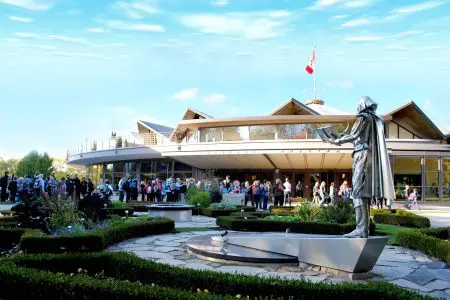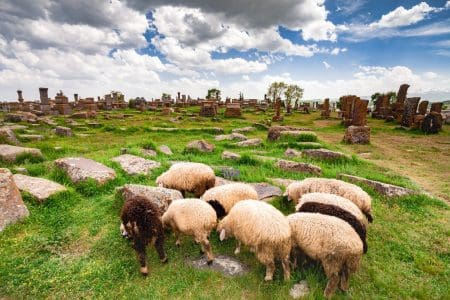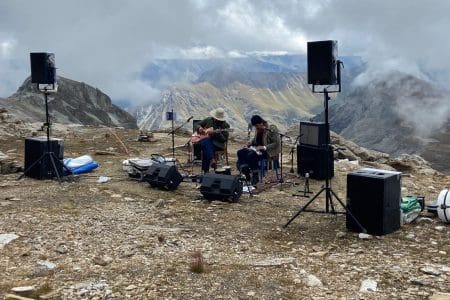
There are few nations in the world for which song holds a greater cultural status than Estonia. The bloodless, so-called Singing Revolution in the late 1980s was a defiant national soundtrack that accompanied the end of Soviet occupation and the re-establishment of independence in 1991. Throughout that period of oppression, hundreds of amateur choirs all over the country would rehearse for the Estonian Song and Dance Celebration in the capital Tallinn – held in July 2025 for the 28th time.
It’s usually held every five years. This festival, centring on the specially built Tallinn Song Stage since 1928 but first held in 1869 in the city of Tartu, is an eagerly anticipated highlight on the national calendar. Dance shows also take place at the capital’s Kalev Central Stadium.
The 28th Estonian Song and Dance Celebration, on the theme of Kinship, takes place from July 3 to 6. The festival, with both song and dance elements, is recognised on the UNESCO List of Intangible Cultural Heritage. In its early forms, only adult male choirs took part, but these days there are no restrictions on age or gender.
In view of the renewed imperial rumblings coming from Estonia’s eastern Russian neighbour and historic oppressor, and as the first festival of its kind to be held since Russia’s invasion of Ukraine in 2022, the significance of the 2025 event as an expression of independence and national identity will be more pronounced than ever at this year’s event.
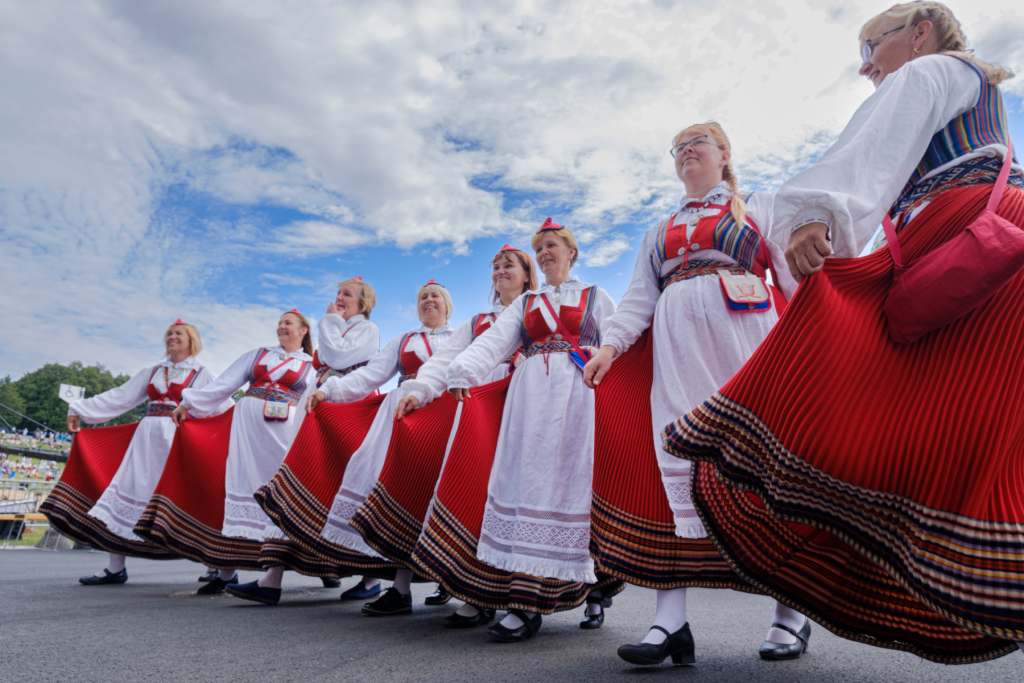
Superpower of Song
A nation of only 1.4 million souls, Estonia punches above its weight in many ways, including in its digital tech knowhow, lauded educational system – and widespread, sustained enthusiasm for choral music and traditional dance. The festival attracts more than a thousand choirs and hundreds of dance groups, the majority from within Estonia itself, but including some international contributions from the Estonian diaspora as far afield as Australia and North America.
The total number of individual participant choristers is expected to be well over 30,000, and a traditional, intensely emotional climax is reached on the opening afternoon and evening with a procession of choirs from the city centre to the Song Stage on the edge of the Kadriorg Park. Regional traditional costumes add a colourful element to the carnival atmosphere.
A flame, lit in Tartu as a nod to its historical role as the festival’s birthplace, is ceremoniously carried, Olympic-style, to the Stage as a crowd gathers in the grounds to witness and participate in a mass performance of traditional song. This culminates in a tear-jerking rendition of the national anthem, Mu isamaa, mu õnn ja rõõm (‘My homeland, my happiness and joy)’. The second evening features a seven-hour Grand Concert, with different choirs and orchestras presenting 40 pieces.
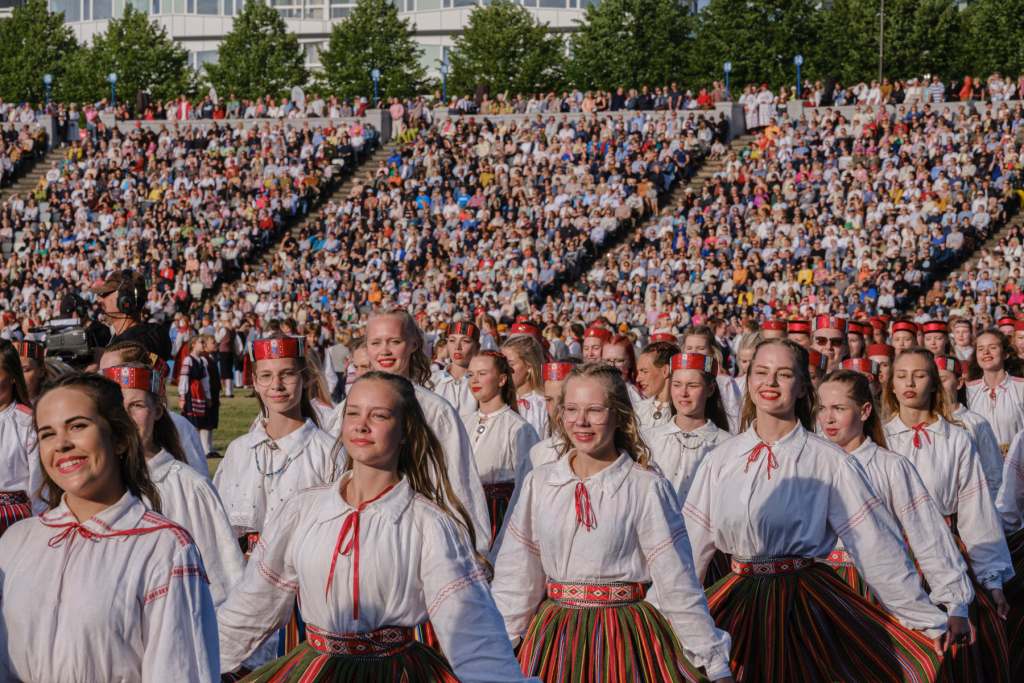
Stage Is Set
The festival has come a long way since its first event in 1869 in Tartu, when about 1,000 singers performed to an audience of 15,000. In 1962 it expanded to a separate youth event held in the years between the main ‘all-ages’ festival, but as of 2029, when the next festival is scheduled, the two events will be merged into a single Song and Dance Festival spanning a two-week period. When it’s not hosting these festivals, the Song Stage has served as Estonia’s main venue for other outdoor musical events, featuring the likes of AC/DC, The Rolling Stones and Metallica.
“The Song and Dance Festival is special for Estonians because it is more than just a musical event — it’s a powerful expression of national identity and unity,” says Kristina Mägi, who hails from Estonia’s biggest island, Saaremaa. “Historically, the festival has also played a crucial role in preserving the Estonian language and culture, even in difficult times. The festival embodies a sense of freedom, pride, and tradition. It’s a unique and unforgettable experience.”
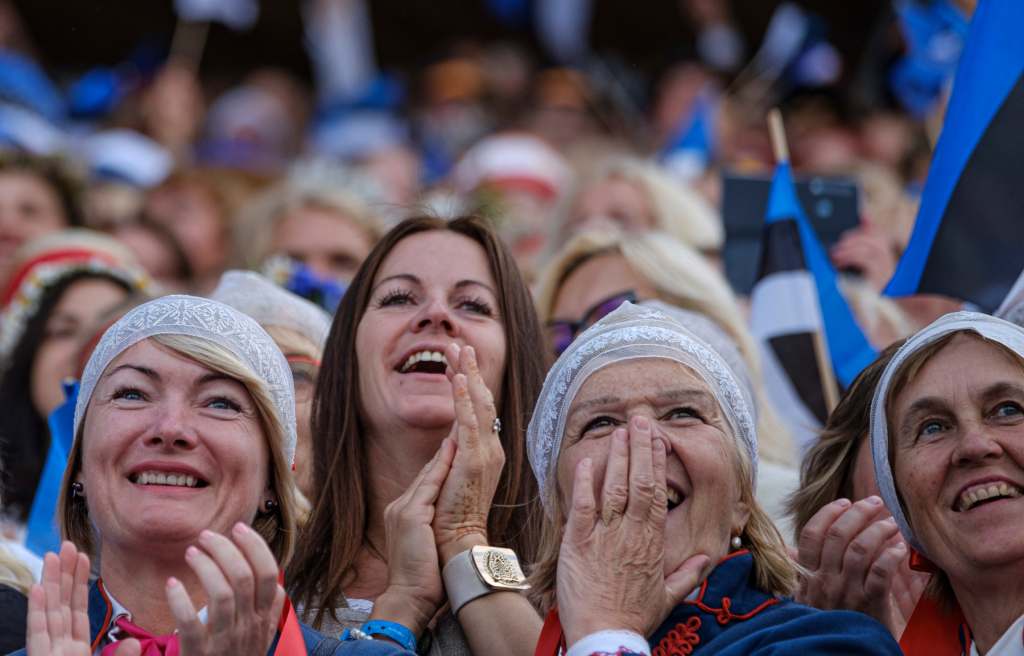
Estonian Song and Dance Celebration
Visit the official website at https://2025.laulupidu.ee/en/song-and-dance-festival-schedule/
Tickets for the Estonian Song and Dance Celebration 2025
Advance tickets, for three dance and two song performances, sell out fast online:
https://2025.laulupidu.ee/en/buy-tickets/. The five-kilometre opening procession from the Old Town to the Song Stage on July 5 is free to attend, as is the folk music concert in the Vabaduse Square on July 4.
Weather in Estonia
Estonian summers are generally pleasant, with temperatures in the mid-20s C but evenings can be cooler, and concerts at the outdoor, mainly uncovered Song Stage grounds go ahead in rain or shine, so waterproof outdoor clothing might be needed. Umbrellas prohibited, but picnics permitted!
Getting to Estonia
Tallinn’s international airport is about five kilometres away from Tallinn Old Town, on the edge of the city. From the UK, it’s served nonstop by Wizz Air (Luton), Air Baltic (Gatwick), Ryanair (Stansted). Finnair has connecting flights from Helsinki, served from Heathrow. There is a choice of regular sea crossings between Helsinki and Tallinn daily operated by Viking Line, Tallink Silja and Eckerö Line.
Accommodation in Tallinn
Tallinn’s Old Town has many hotels, hostels, and short-rent apartments. Book early! Especially recommended: Nunne Boutique Hotel https://nunne.ee/en/
Dining Out in Tallinn
Tallinn’s Old Town is packed with good bars and restaurants. Especially recommended: For food, Rataskaevu 16 http://www.rataskaevu16.ee/en/
For drink, Hell Hunt https://hellhunt.ee/en/
All images by Tim Bird.
